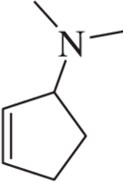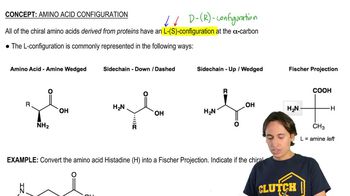Textbook Question
Convert the models in Problem 20 to skeletal structures.
a. <IMAGE>
b. <IMAGE>
c. <IMAGE>
d. <IMAGE>

 Verified step by step guidance
Verified step by step guidance Verified video answer for a similar problem:
Verified video answer for a similar problem:



 4:03m
4:03mMaster How bondline is different from Lewis Structures. with a bite sized video explanation from Johnny
Start learning